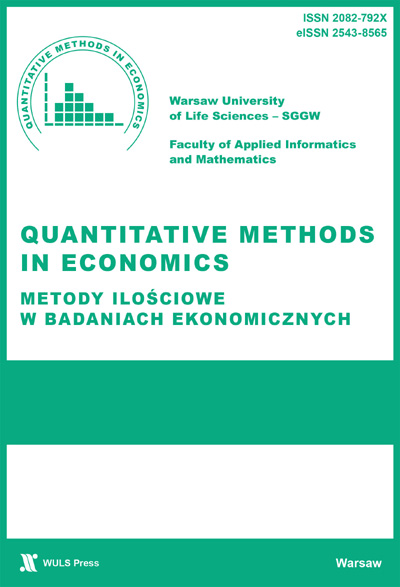Main Article Content
We present a theory of expected utility with state-dependent linear utility functions for monetary returns, that incorporates the possibility of loss-aversion. Our results relate to “first order stochastic dominance”, “mean-preserving spread”, “increasing-concave linear utility profiles” and “risk aversion”. As an application of the expected utility theory developed here, we analyze the contract that a monopolist would offer in an insurance market that allowed for partial coverage of loss.
Article Details
Bonanno G. (2019) Uncertainty Risk and Information. https://faculty.econ.ucdavis.edu/faculty/bonanno/PDF/URI_book.pdf
Gilboa I., Schmeidler D. (1989) Maxmin Expected Utility with Non-Unique Prior. Journal of Mathematical Economics, 18(2), 141-153. (Crossref)
Kahneman D. Tversky A. (1979) Prospect Theory: An Analysis of Decision Under Risk. Econometrica, 47(2), 263-291. (Crossref)
Karni E. (1985) Decision Making Under Uncertainty: The Case of State-Dependent Preferences. Harvard University Press. (Crossref)
Lahiri S. (2023a) Understanding Expected Utility for Decision Making. Management Studies, 11(2), 93-104.
Lahiri S. (2023b) Understanding Ramsey-de Finetti Probabilities and the St. Petersburg Paradox. Economics and Management Information, 2(2), 1 4. https://doi.org/10.58195/emi.v2i2.91 (Crossref)
Lahiri S. (2024) Weak Arbitrage Theorem Incorporating Loss Aversion. Preprints. https://doi.org/10.20944/preprints202411.0287.v1 (Crossref)
Downloads
- Somdeb Lahiri, Risk Aversion and a Calculus for Finitely Generated Piecewise Linear Functions: A Calculus that Economists Ought to Develop? , Metody Ilościowe w Badaniach Ekonomicznych: Tom 23 Nr 1 (2022)

Utwór dostępny jest na licencji Creative Commons Uznanie autorstwa – Użycie niekomercyjne 4.0 Międzynarodowe.
Publikowane artykuły dostępne są na warunkach Open Access na zasadach licencji Creative Commons CC BY-NC – do celów niekomercyjnych udostępnione materiały mogą być kopiowane, drukowane i rozpowszechniane. Autorzy ponoszą opłatę za opublikowanie artykułu.





